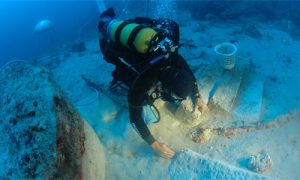
Over the past two decades Texas A&M University (TAMU), through its affiliation with the Institute of Nautical Archaeology (INA), the joint excavations of significant shipwrecks with INA, and the establishment of the Nautical Archaeology Program (NAP) in the Department of Anthropology, has become recognized as having one of the best nautical archaeology academic and research programs in the world. Over this same period, the conservation laboratories that are part of NAP have become very innovative and are acknowledged as being leaders in this field of conservation. In order to capitalize and build on this recognition, a Center for Maritime Archaeology and Conservation (CMAC) was created by the Texas A&M University Board of Regents in May 2005 as the best means by which the goals and mission of nautical archaeology at TAMU can be realized.
The mission of CMAC is simple. CMAC, as a research center at TAMU, and through its affiliation with INA and the Department of Oceanography, will continue to keep TAMU in the forefront of nautical, maritime, and underwater archaeology research. It will continue to build on our expertise in artifact conservation, advance underwater mapping technology, and build on the reputation it now has in these research areas. More simply put, CMAC’s mission is to form research alliances such as the one we have with the INA in order to continue to be in the forefront of maritime archaeology research and be an active partner in one of the best academic programs in nautical archaeology in the world. To accomplish these ideals, CMAC has incorporated several varied laboratories specializing in various research areas and aspects of nautical archaeology. By concentrating on these objectives, CMAC will accomplish this multifaceted mission.
An artifact conservation facility where historic and prehistoric artifacts made from wood, metal and other materials recovered from beneath the oceans and rivers of the world, as well as from archaeological sites of certain kind on land, are restored.
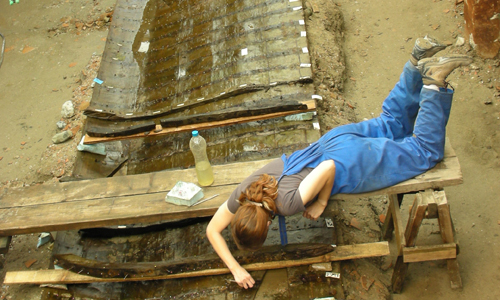
The Ship Reconstruction Laboratory was created by J. Richard Steffy in 1976 and today is one of the laboratories of the Centre for Maritime Archaeology and Conservation of the Anthropology Department at Texas A&M University. Its mission is to acquire and disseminate knowledge about shipbuilding through time. As a classroom its main objective is to provide an effective learning environment. As research laboratory its objective is to facilitate investigation, seek public and private research funds, and recruit and retain quality students for its projects. As an outreach institution it aims at providing information, education, and guidance about the discipline of nautical archaeology and the importance of the world’s submerged cultural heritage,perhaps more than ever threatened by treasure hunting.
The New World Nautical Archaeology Laboratory serves as the central clearinghouse for Center for Maritime Archaeology and Conservation and Nautical Archaeology Program research projects focused on the Western Hemisphere and European expansion. The lab provides working space, computer facilities, and resources for students and scholars researching shipwrecks and topics in the New World. The space is also used as the repository for Dr. Crisman’s research on Lake Champlain, the Great Lakes, the Azores, Western River Steamboats, and the War of 1812.
The Old World Laboratory focuses on research in the Mediterranean and surrounding seas, from the 14th-century BC Uluburun shipwreck to a 16th-century AD Ottoman wreck. Current research includes the study of Byzantine shipwrecks from the former Theodosian harbor of Constantinople at Yenikapi, Istanbul by Dr. Pulak, the Roman navis lapidaria sunk off Kiziburun, Turkey by Dr. Carlson, and Dr. Wachsmann’s Danaos Project, a deepwater survey of the eastern Mediterranean.
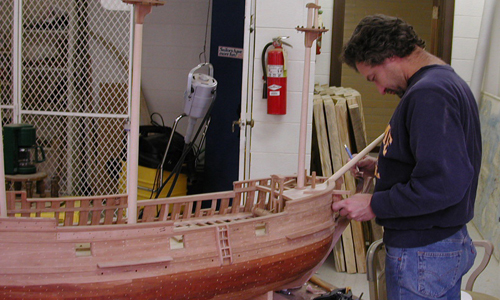
The Ship Model Laboratory focuses on the construction of precise models derived from archaeological and historical research. Glenn Grieco, a graduate of the Nautical Archaeology Program at Texas A&M University, is a professional ship modeler. He has built numerous models for CMAC, including models of the 17th century French ship La Belle, the 19th century American brig Jefferson, and the western river steamboat Heroine. Grieco uses precise details derived from the archaeological remains of shipwrecks in the construction of his models.
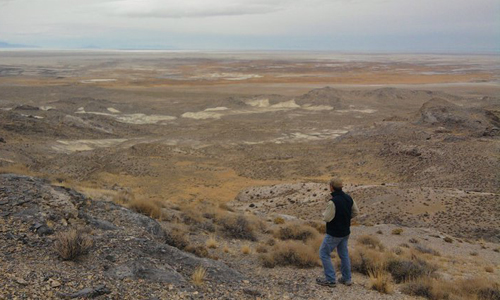
The Center for the Study of the First Americans explores the questions surrounding the peopling of the Americas. The Center pursues research, education, and public outreach.Research: The Center develops new knowledge regarding PaleoAmerican origins, human dispersal, settlement, and cultural and biological development that occurred before 12,000 years ago.
Education: The Center trains students who will go on to continue First Americans research.
Outreach: The Center disseminates the results of academic research into the first Americans to the general public through our publications.
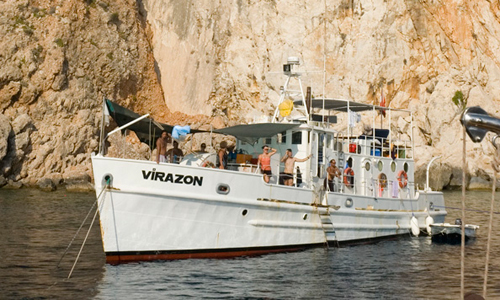
The Institute of Nautical Archaeology (INA) is an independent, international non-profit research organization dedicated to locating, excavating, preserving, and researching significant underwater and nautical archaeological sites. Founded over 50 years ago by Dr. George F. Bass, INA has been affiliated with Texas A&M University since 1976. While NAP/CMAC provides academic training for graduate students, many of these students gain vital and practical field experience on INA excavations. INA patrons and directors have contributed to the long-term financial support of NAP/CMAC through the endowment of numerous faculty chairs, fellowships, and student scholarships.INA research projects bring to light those remnants of our collective past that speak most powerfully to us about who we are, what we have done, and what we are capable of. INA research associates and affiliated scholars uphold the highest scientific, academic and ethical standards, working to make seafaring history accessible to the public through museum exhibitions, public lectures, scholarly conferences, and publications including our newsletter, The INA Quarterly and our more comprehensive yearly review, The INA Annual.
INA’s office in the Mediterranean is the Bodrum Research Center (BRC) in southwestern Turkey, where INA staff work year-round to conserve and restore artifacts raised during INA shipwreck surveys and excavations. The BRC is a comprehensive facility with offices, dormitory rooms, the Tooze Library and the Nixon Griffis Conservation Laboratory, including the Hethea Nye Wood Conservation Facility. Along with INA’s research vessels, the resources of the BRC support the work of scholars who conduct archaeological surveys leading to the discovery of shipwrecks and to study the significance of their findings.
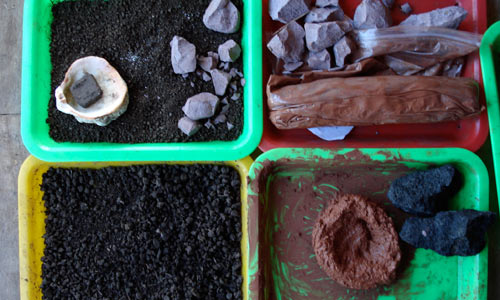
The Anthropology Research Collections (ARC) at Texas A&M University support and complement the Department of Anthropology’s goals of education and research focused on understanding the human experience across space and time. ARC serves this mission primarily through maintaining, and making available to researchers, anthropological materials collected during research projects led by TAMU Anthropology faculty and students. The driving force of our mission is the recognition that cultural materials — as manifestations of the practical and symbolic lives of human groups — represent tangible and irreplaceable sources of information for the study of human behavior.
The Radiocarbon and Isotope Preparation Laboratory at Texas A&M University focuses on the extraction and purification of carbon-containing samples from a wide variety of sample types including charcoal, carbonates, bone, and soil. The lab has been swiped for the presence of 14C tracer and maintains constant quality controls on radiocarbon processing with both PSUAMS and KCCAMS through use of international and internal known-age lab standards (e.g., OX-1, OX2, Prophet River Wood, Beaufort Whale, FIRI secondaries). Samples for AMS radiocarbon dating are prepped and combusted to CO2 gas before shipment to the AMS Radiocarbon Laboratory at Pennsylvania State University (PSUAMS) for graphitization and subsequent analysis on a National Electronics Corporation compact spectrometer with a 0.5MV accelerator (NEC 1.5SDH-1).
Our facilities include both dry- and wet-lab areas for sample storage and preparation with standard laboratory equipment including a fume hood, Millipore NanoPure water purifier, drying oven, freezer, freeze-dry lyophilizer, and balances. We are fully equipped for the preparation of samples for radiocarbon analyses, including ABA methods for charcoal and organics; Ultrafiltration and XAD for archaeological bone, and removal of mobile humin and humic fractions from soils for stable isotope measurements. We are also equipped for stable isotope preparation of archaeological and modern specimens including bone, teeth, shells, and plants to measure carbon (δ13C), nitrogen (δ15N), sulfur (δ34S), oxygen (δ18O), and strontium (87Sr/86Sr) isotopes. Key equipment for radiocarbon and stable isotope sample prep includes a Hettich Rotofix centrifuge, Virtis lyophilizer, Barnstead programmable muffle furnace, and a vacuum line for sealing radiocarbon samples prior to combustion. The combustion line is made with Swagelok Ultra-Torr fittings on stainless steel drawn by an oil-free Pfeiffer turbo pump, modeled on lines in use at KCCAMS at the University of California, Irvine.

Other Research Laboratories
Archaeobotany Laboratory
Analysis and study of prehistoric plant materials recovered from archaeological sites and reconstruction of prehistoric diet patterns in many areas of the world.
Biological Anthropology Laboratory
Prehistoric human skeletal biology and osteology, paleoanthropology, and primate behavior. Facilities include an excellent and expanding collection of human skeletal remains, australopithecine casts, hominine fossil casts, and primate skeletal remains. Teaching facilities include a computerized laboratory.
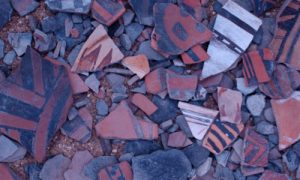
Palynology Laboratory
Reconstruction of paleoenvironments; determination of the cultural use of plants; identification of the cultural use of artifacts, containers, and structures; and reconstruction of the contents of prehistoric diets.
Planetary Health Laboratory
A laboratory space to carry out all phases of research on the interconnections between the health of modern people and their environment at all scales, and the relationship to global human rights.
Zooarchaeology Laboratory
Study and analysis of faunal remains associated with archaeological sites is undertaken primarily to help in understanding past people’s adaptations to the many environments they have occupied and the lifeways they have followed.








